The Basics for Beginning Hikers – A quick-start guide to getting started hiking… in New Jersey and beyond.
One of the great things about hiking is that it doesn’t require a lot of gear to get started other than sturdy and comfortable footwear, a trail map, some water… and a little information.
However, we’ve encountered a lot of unprepared people out on trails. With that in mind, here is our quick start guide to getting out there.
Before You Hike
 Picking a trail
Picking a trail
Use the resources on this site, such as the NJ trail maps and hiking books pages, to help you choose the perfect trail for you.
Check out the Top 10 Hikes NJ or Best Hikes in NJ for the most popular hikes and Short Hikes for beginners.
It’s also helpful to pick up a New Jersey Atlas, which contains natural areas as well as roads.
Things to consider:
- Determine where – a nearby park or an hour or more away? Keep in mind you’ll have to drive back after you’ve hiked all day.
- How far do you want to hike – make sure you check the trail mileage whether the numbers listed are for one way or round trip.
- Do you want forest, views, or a water feature to hike near – find out what you’ll see along the trail.

Footwear, or “Happy Feet = Happy Hiker”
We once passed a woman heading to Sunfish Pond on the Appalachian Trail, gingerly picking her way over the rocks while wearing high heels.
Seriously. Please do not be this person.
Footwear has come a long way since the big bulky boots of the past. Basically you want: stability, comfort and protection.
For some people it’s a classic hiking boot… others do fine in a trail runner. It’s personal preference.
Technically you COULD hike in your ratty old sneaks, but this isn’t an area you should skimp on. If you intend to keep hiking, buy the best footwear you can afford. Your feet will thank you!
North Jersey trails (Water Gap area, Highlands etc) are notoriously rocky. In our opinion, sneakers (even trail runners) don’t have enough protection and will probably leave the bottom of your feet tired and sore.
Trail running sneakers are generally OK for Central and Southern NJ but we still prefer a hiking shoe or boot.
For some ideas, check out our picks for hiking footwear.
TIP: Make sure you try on footwear on later in the day as feet swell as the day progresses.

What to Bring
The basics are:
- Water
- Snacks or lunch
- Trail map and hike directions
- Compass
- Basic first id kit (Band-Aids, antiseptic wipes, ibuprofen)
- Bug spray (unless its winter)
- Sunglasses and sunscreen
- Extra layer (unless its really hot out)
- A backpack to carry it in
This is just a rough guide and depends where you are hiking (remote area vs local park), how far you are going and what time of year.
Also consider having a flashlight (or a headlamp), pocketknife, and fire starter. We’ve never needed to use them… but better to be prepared.

Hydration
At least grab a bottle of water from WaWa or 7-11 before hitting a trail, especially if it’s hot out. Dehydration will ruin the day for sure.
There are also a myriad of options from plastic water bottles like Nalgene’s, to bladder systems like Camelback. We prefer the more eco-friendly options such as reusable bottles or water bladder systems.
How much should I drink to stay hydrated?
Everyone is different, and is also depends on the temperature and level of exertion… but a general guideline is 4 to 6 ounces every 20 minutes or so.
Better to sip a little frequently than a lot every few hours (this is where a hydration bladder comes in handy) [Source: Backpacker Magazine]
Fitness Level
Hiking is a great way to get and keep in shape, but honestly assess your fitness level.
Don’t tackle a 7 mile hike if you’ve been a couch potato for the last 5 years – you probably won’t enjoy it and you could injure yourself.
The fastest way to lose interest in a new sport is to take on too much, too quickly. Start with a few miles and work your way up to see if you like it.
Remember that the further you hike out – the further you have to hike back.
On The Trail
Where’s the Trail?
The start of a trail is called a trailhead.
Many trails are in parks with designated parking areas, nature centers, or visitor centers with brochures, maps and information with trailheads clearly marked with signs or colored markers.
Some trailheads are just dirt parking areas alongside the road with a spot for a few cars, and a sign to mark the trailhead, or perhaps just marks on a tree. There may or may not be rest facilities.

Trail Markers
Trails are usually marked with colored paint marks. They are also called “blazes”.
They can be painted on trees or brown plastic flexible poles, or are colored discs nailed to trees.
So if you are taking the “Blue” trail, you follow the blue colored marks.
If you realize you no longer see trail markers, backtrack until you find them again. Forging on or guessing where the trail continues can get you lost.

Where’s the Restroom?
Parks will usually have restroom facilities at the main entrance, either inside the visitor center or porta-johns somewhere.
They may or may not be open, depending on day and time of year. After Labor Day, some facilities can be closed for the season.
Smaller trailheads may offer porta-johns or composting toilets. Or they may not. We make note of restroom availability when we post routes.
If you are unsure… best bet is to hit a highway rest stop or a gas station before you arrive.
Ticks & Mosquitoes
Ticks and Mosquitoes are annoying and gross AND they can make you sick with Lyme Disease or West Nile Virus.
- Always check yourself for ticks after a hike – even places that were covered with clothing…the little buggers crawl ALL over and will seek out the warmest spot on your body. Especially check the back of the knee, groin, navel, armpit, ears, and nape of the neck.
- Long pants and a shirt are best, but not always practical in warm weather. Always use bug spray on exposed areas and stay away from brush and tall grass. A product with DEET, like Deep Woods Off, is usually recommended as the best, but sometimes that feels like you just bathed in a vat of chemicals. We’ve used “Off – Clean Feel” with decent results (uses Picaridin).
- Tip: Spray your hat instead of directly on your face. Keeps the mosquitoes at bay without risking getting chemicals in your eyes/nose/mouth.
For more information about Lymes and West Nile, tick removal, symptoms, etc – check out our Lyme Disease and West Nile Virus page.
Wildlife
 Do not approach wildlife. Ever.
Do not approach wildlife. Ever.
You do your thing, and they’ll do theirs. There aren’t that many animals to worry about in New Jersey, but when hiking here most people are concerned with:
Bears:
It’s unlikely you will ever encounter a black bear, but they are found in every county in NJ.
It will most likely be terrified of you and run away. Fast. Just keep your distance and be wary if it’s a mother with cubs. Never get between a mother and its cubs, she will aggressively defend them.
Even though your first instinct is to run, DON’T. They will perceive you as prey and they can run much faster then you (up to 35mph). They are natural climbers, so don’t climb a tree. Don’t play dead, that works with grizzly bears but not black bears (there are only black bears in NJ).
If you see a bear: Make noise, and make yourself look big by raising your arms above your head – but don’t be overly aggressive or corner them.
If it huffs, swats the ground or makes popping sounds by snapping it’s jaw – these are signs you are too close. Slowly back away, do not run and don’t make direct eye contact.
If it stands on it’s hind legs or moves closer, it may be trying to detect scents or get a better view – it is not usually a threatening behavior.
If they approach you or charges, stand your ground, don’t make direct eye contact, slowly back away. Let them run well off before continuing, or play it safe and head the other way. Attacks are very rare but fight back if it does (as opposed to “play dead” which only is for grizzlies)
Your best bet while hiking in bear country: Talk, sing, or clap your hands occasionally to alert bears in the area. We like to yell out the occasional “hey bear!”.
Jingle bells or “Bear Bells” strapped to your pack are popular but not very effective. We got this info from a ranger in Yellowstone a few years ago when we asked him if we should get some. He stated that bells aren’t really that loud, just sound like background noise to a bear, plus they don’t associate that sound with humans.
Your voice or clapping is louder and more unnatural sounding to them, and will get their attention. Later in our trip, we noticed that hikers using the bells could not be heard until we were right on them.
For more tips, check out NJ Fish and Wildlife’s “Know the Bear Facts“ brochure.
Snakes:
There are two poisonous snakes in NJ, the Timber Rattlesnake and Copperhead. While it’s rare to encounter them, we have seen rattlesnakes on several occasions. Just give them a wide berth – they don’t want to be around you either.
They will not chase you, but will defend themselves if they feel threatened. No one in NJ has ever died from a Rattlesnake or Copperhead bite. NJ Fish and Wildlife has a good brochure with color photos of all the snakes in New Jersey.
Hiking during Hunting Season

Sunday hunting ban has been lifted. When in doubt, Sunday used to be your best bet to hit a trail. Now there can be bow hunting in Wildlife Management areas so you have to check before you hike.
Check out our page on Hiking in NJ During Hunting Season. Be sure to stay visible by wearing blaze orange (or very bright) clothing. Don’t forget something for your dog, too. We’ve compiled a big list of blaze orange items like hats, shirts, jackets, packs, and dog wear.
Trail Tips
The obvious:
- Don’t litter, and pack out everything you brought in. This seems like a no-brainer, but the amount of bottles and trash on trails say otherwise. [More info on Leave No Trace Principles]
- Park rangers are not employed to pick up after you, and many natural areas are maintained only by volunteers.
- Most parks have a “carry in, carry out” policy, and often provide yellow bags at parking areas and trailheads for you to pack out your trash. You’ll notice there often aren’t garbage cans at parks – that’s because you need to take it with you. If you carried that water bottle or snack bar with you on a trail… it’s no effort to carry the wrapper or empty bottle back out. Don’t be lazy.
- And if you see trash along the trails, consider picking it up and hike it out with you.
Things you may not know:
- Stay on the designated trail even if it is muddy or eroded… passing around widens trails, increases erosion, and can damage nearby plants.
- It’s trail etiquette to let faster hikers behind you pass by stepping to the side. Don’t speed up to stay ahead, or get annoyed that someone is tailing you and not let them pass – everyone hikes at a different pace.
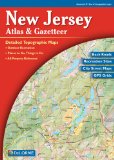
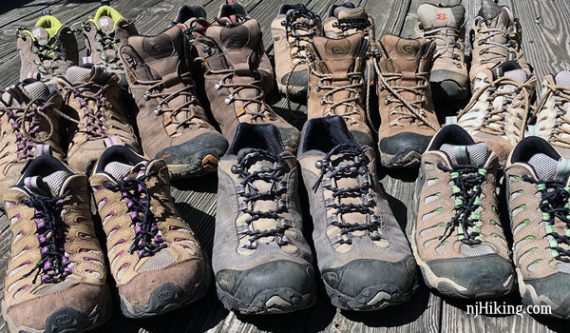
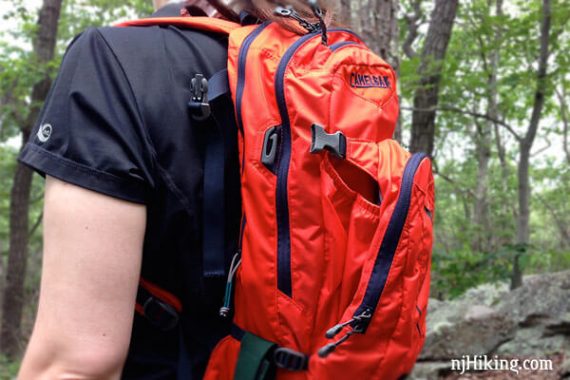
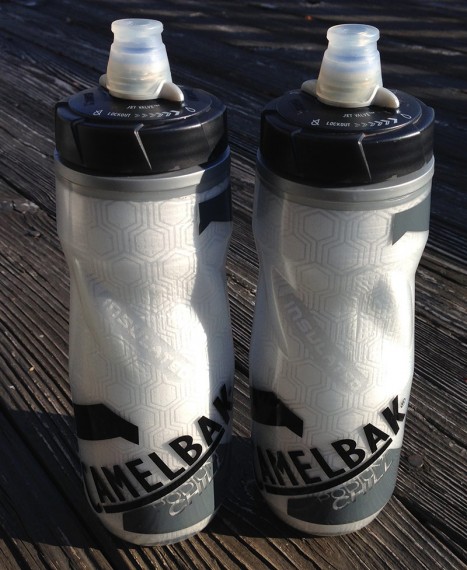
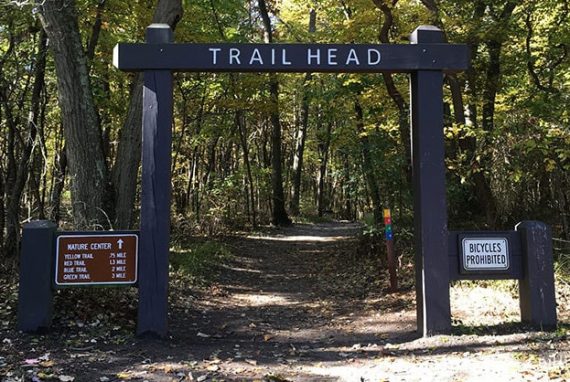
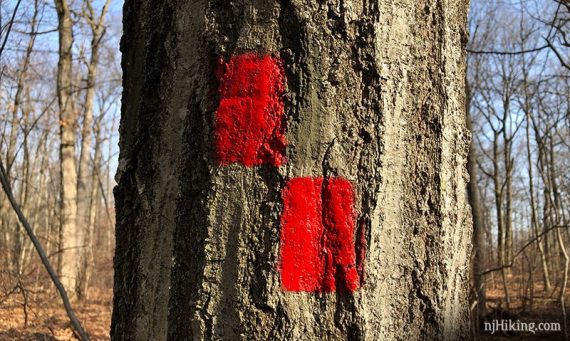
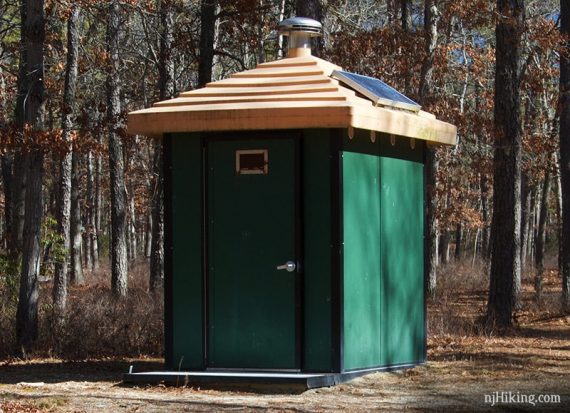
 Do not approach wildlife. Ever.
Do not approach wildlife. Ever.